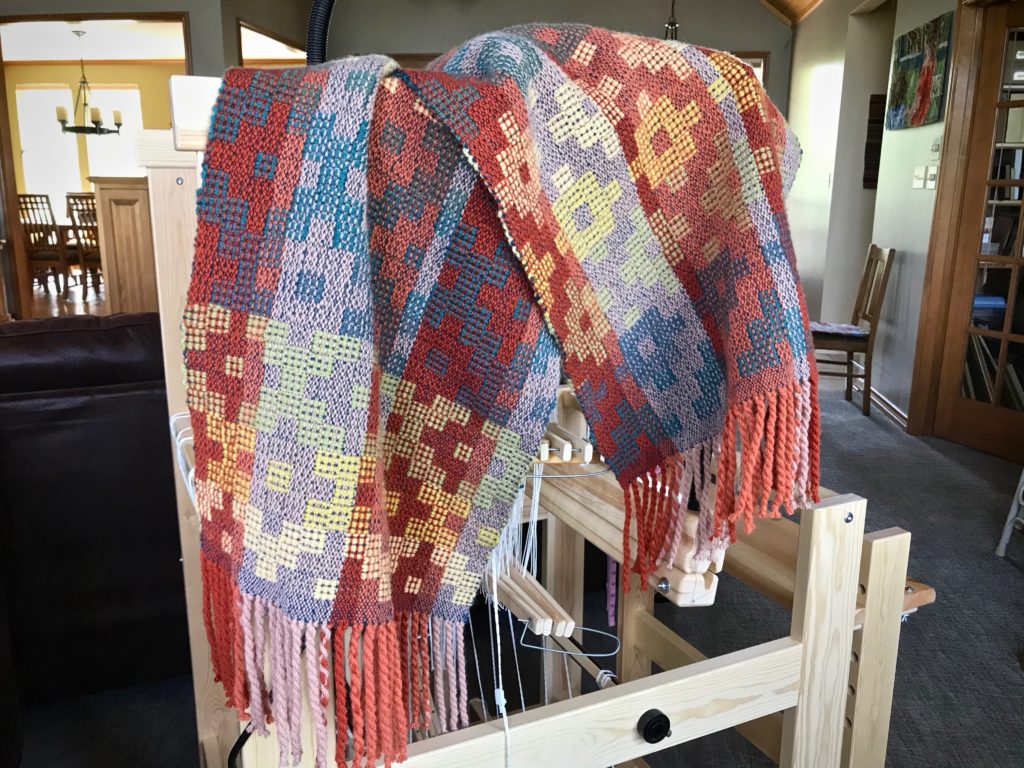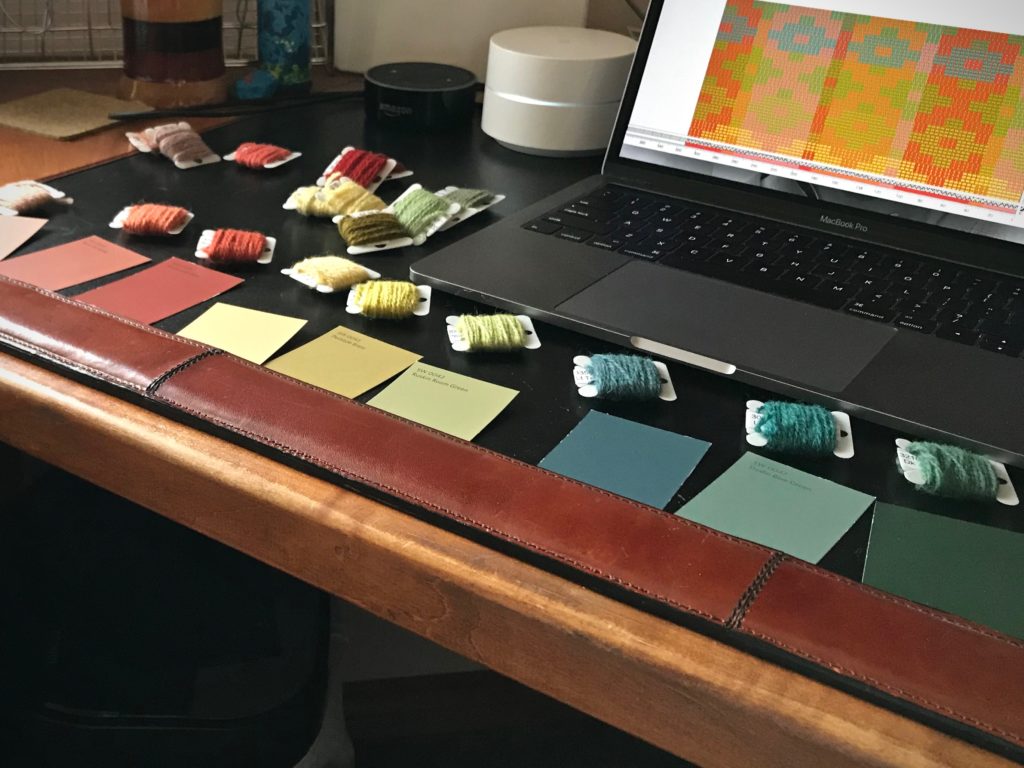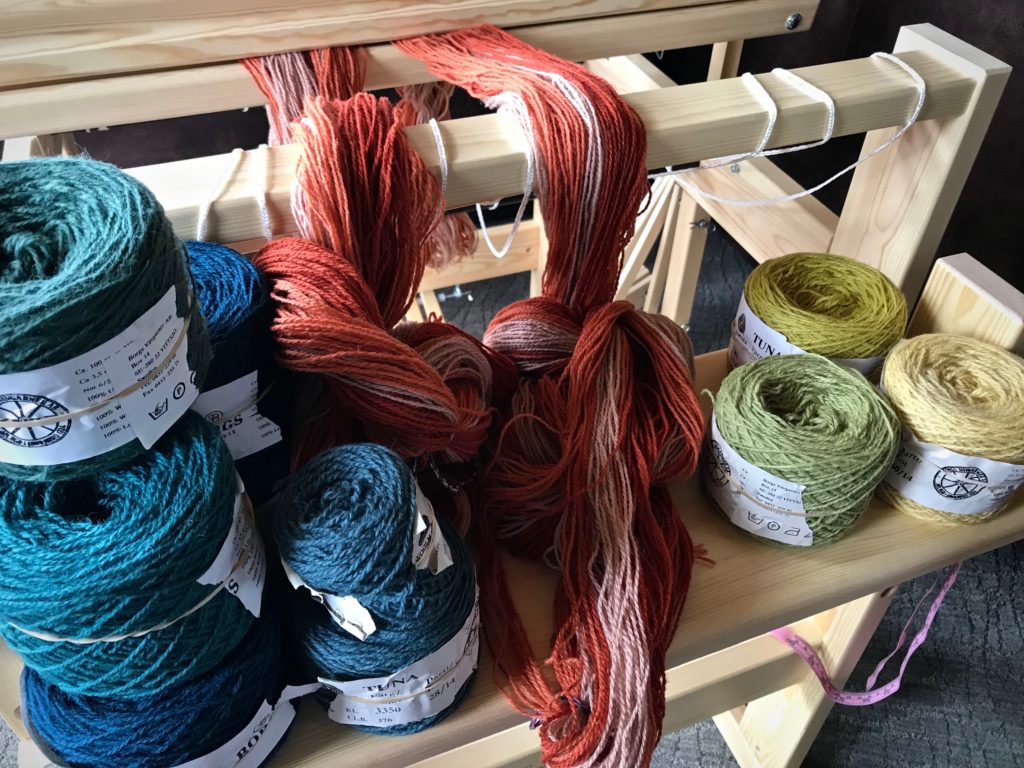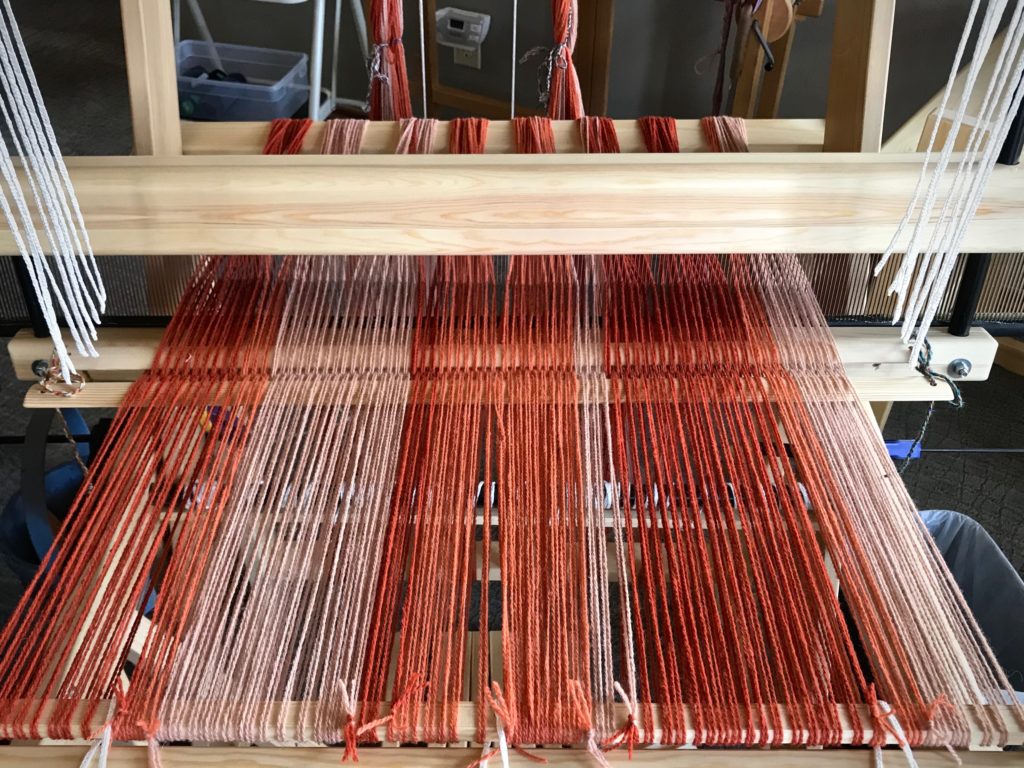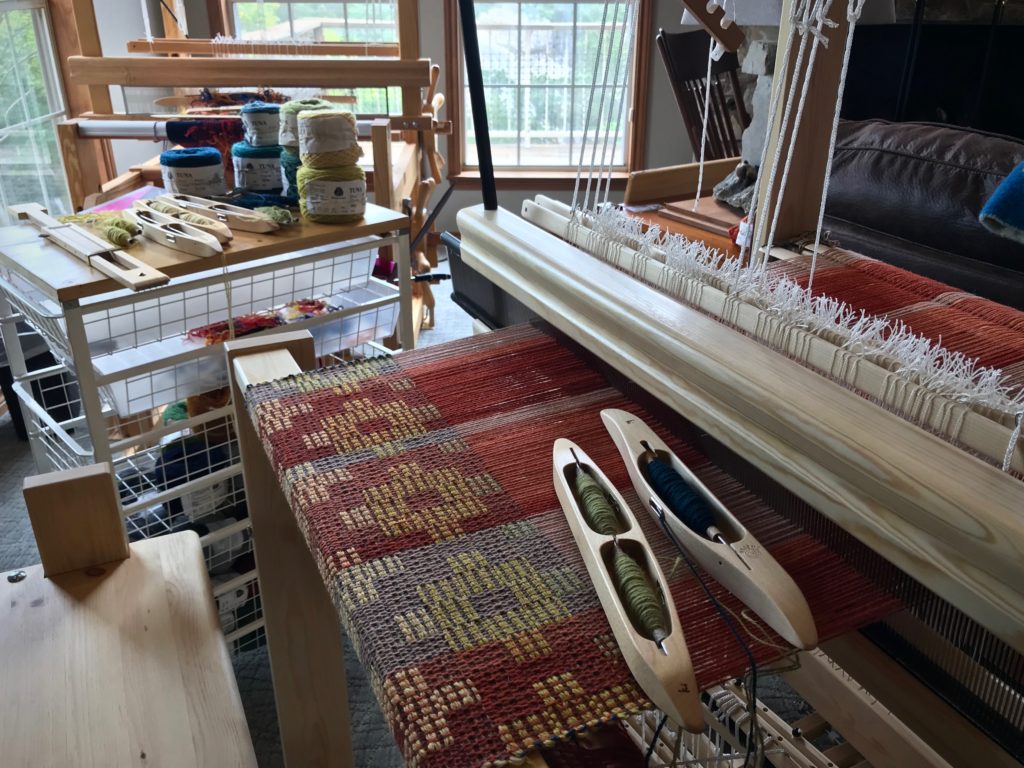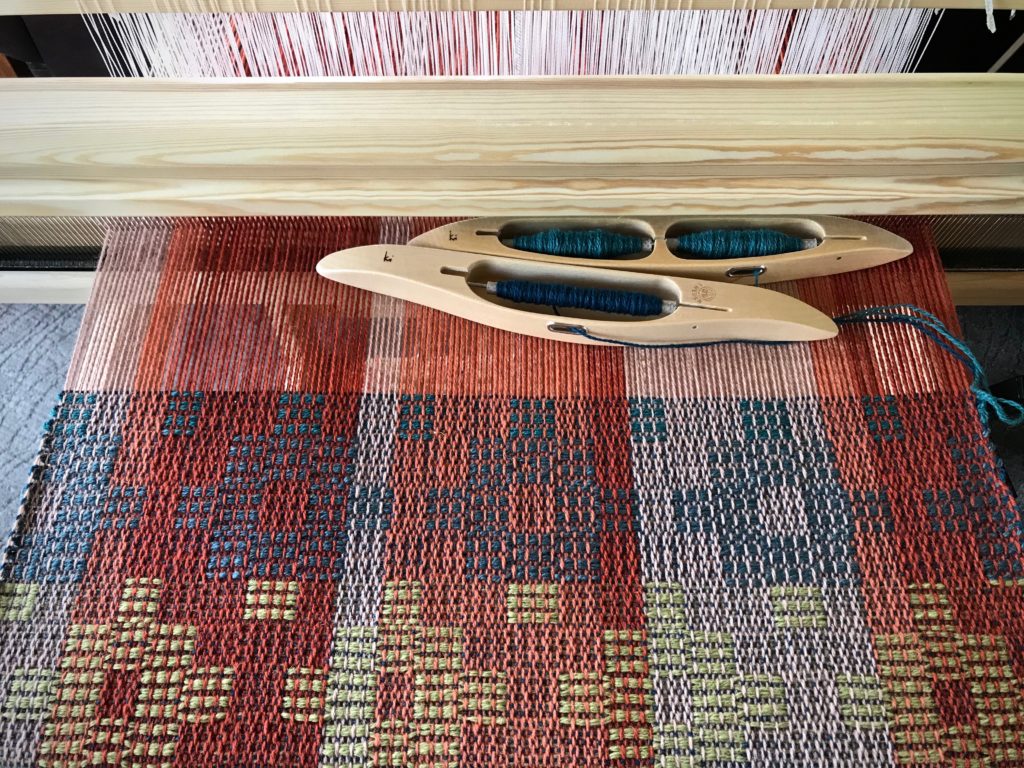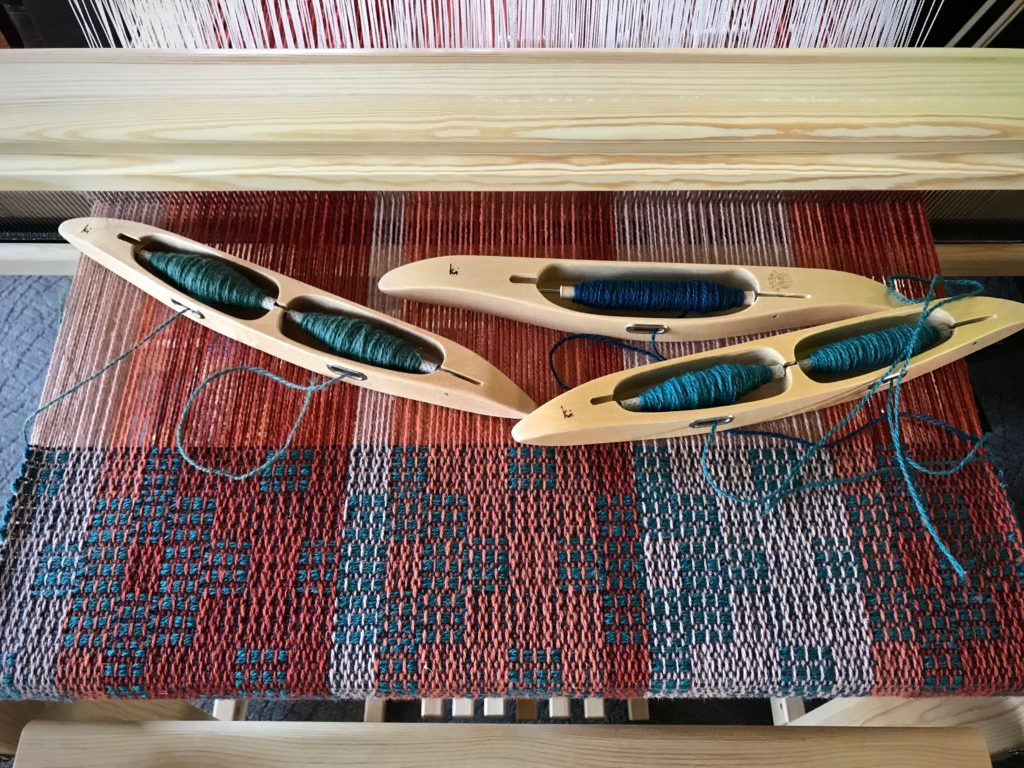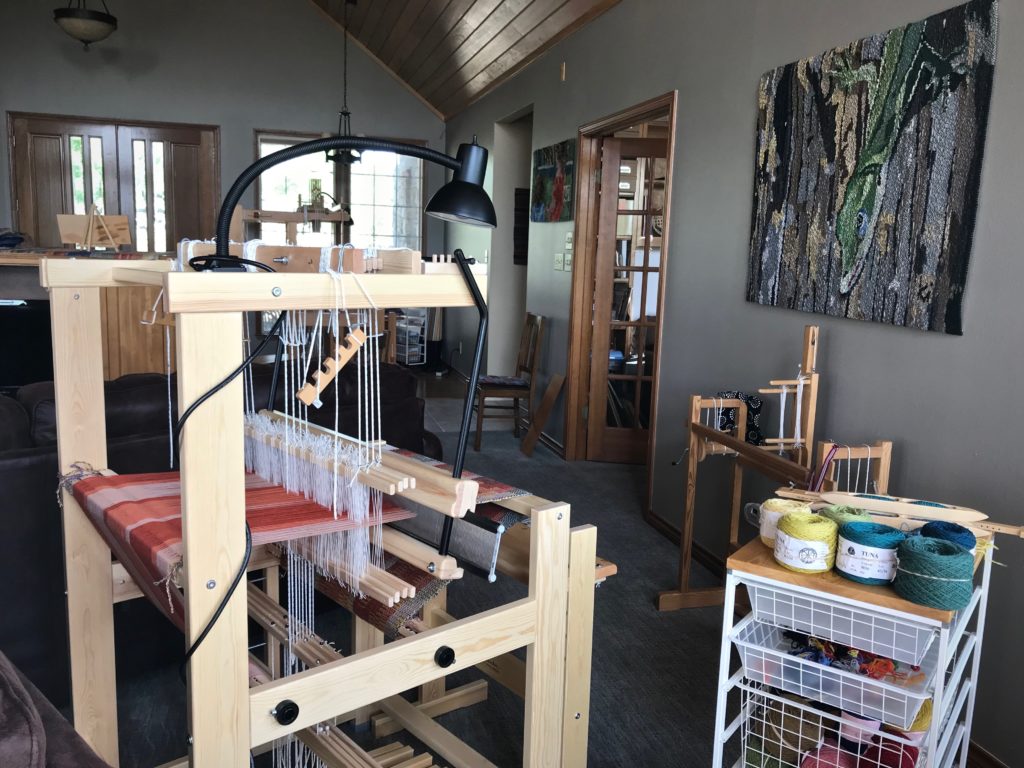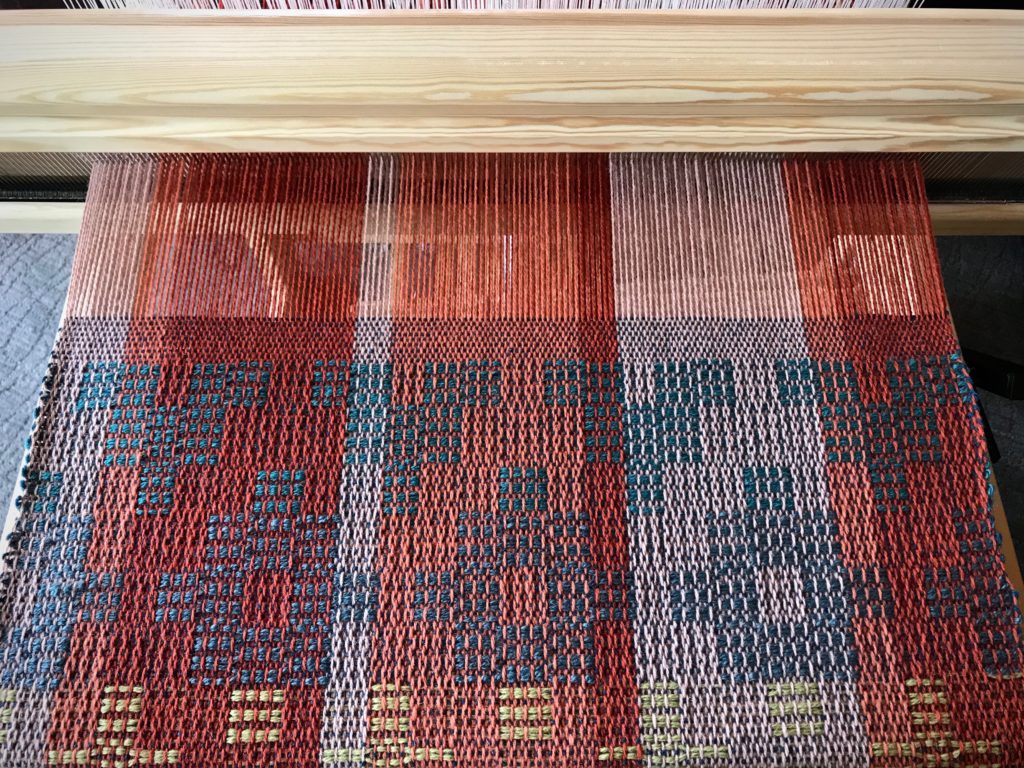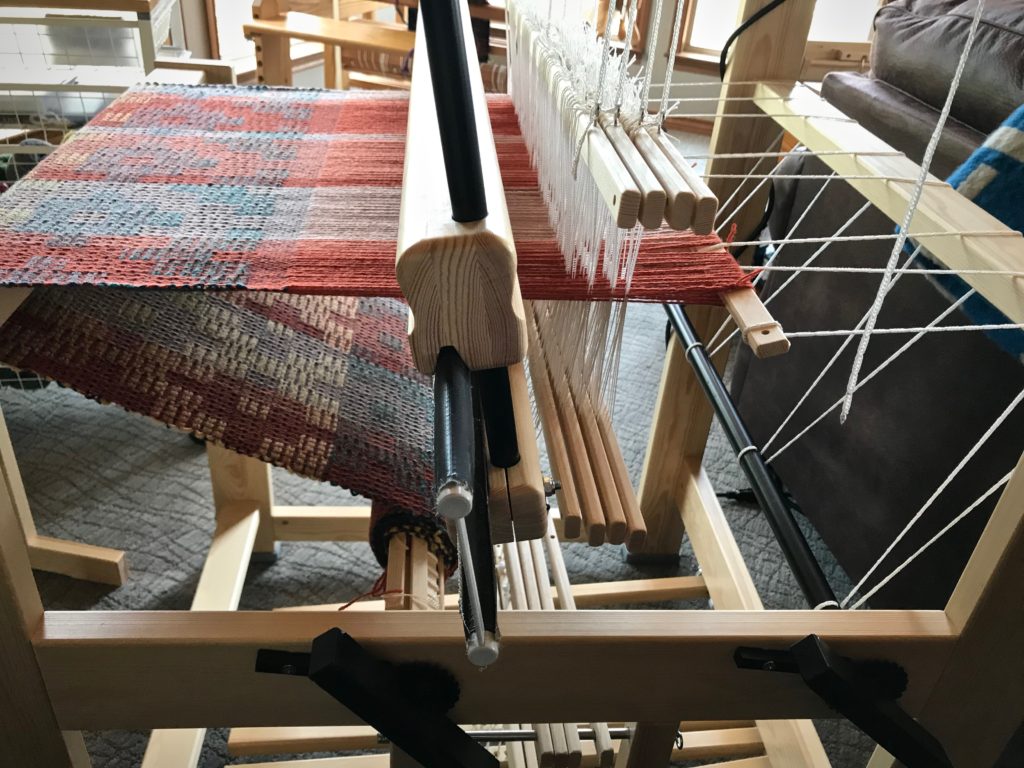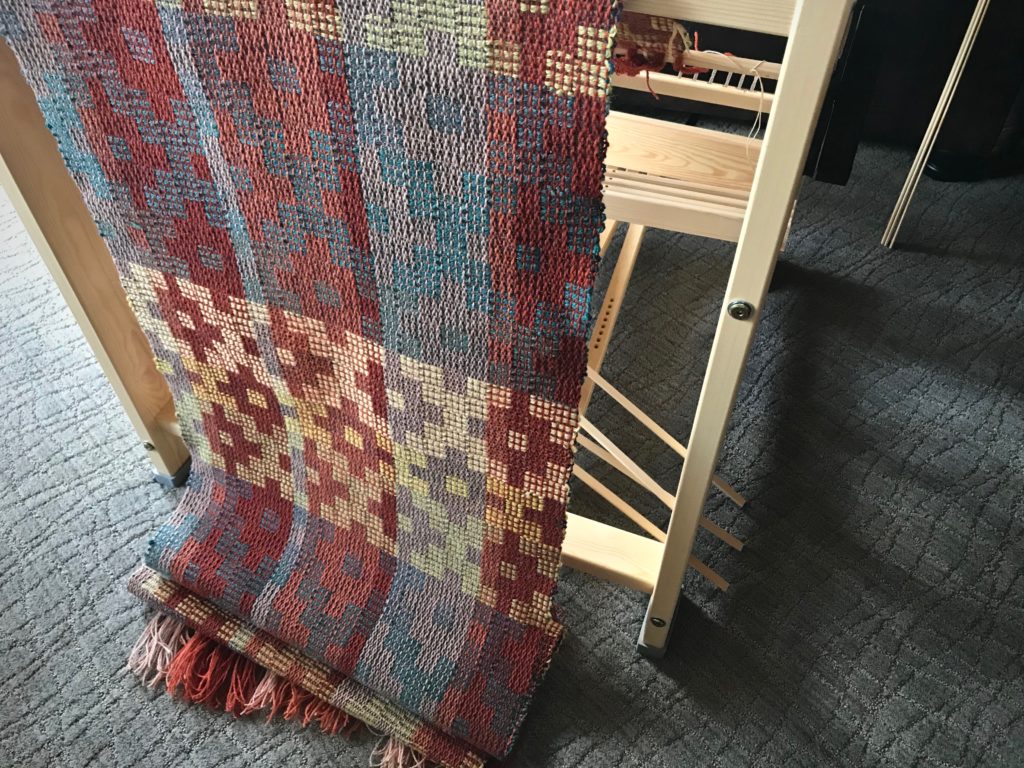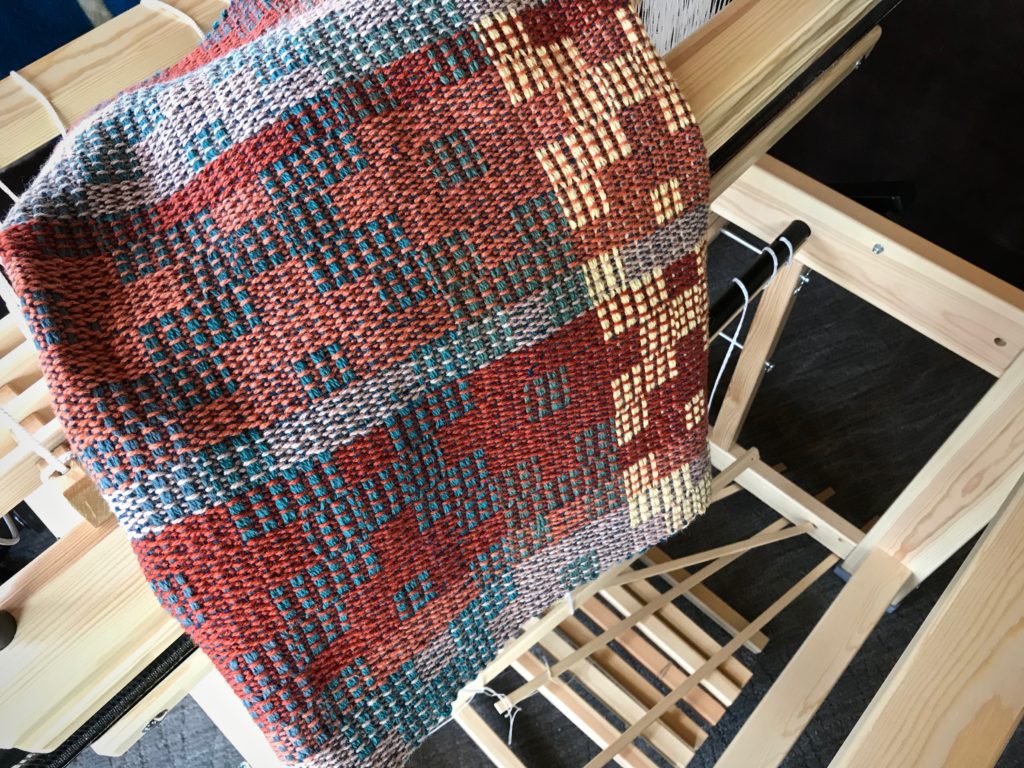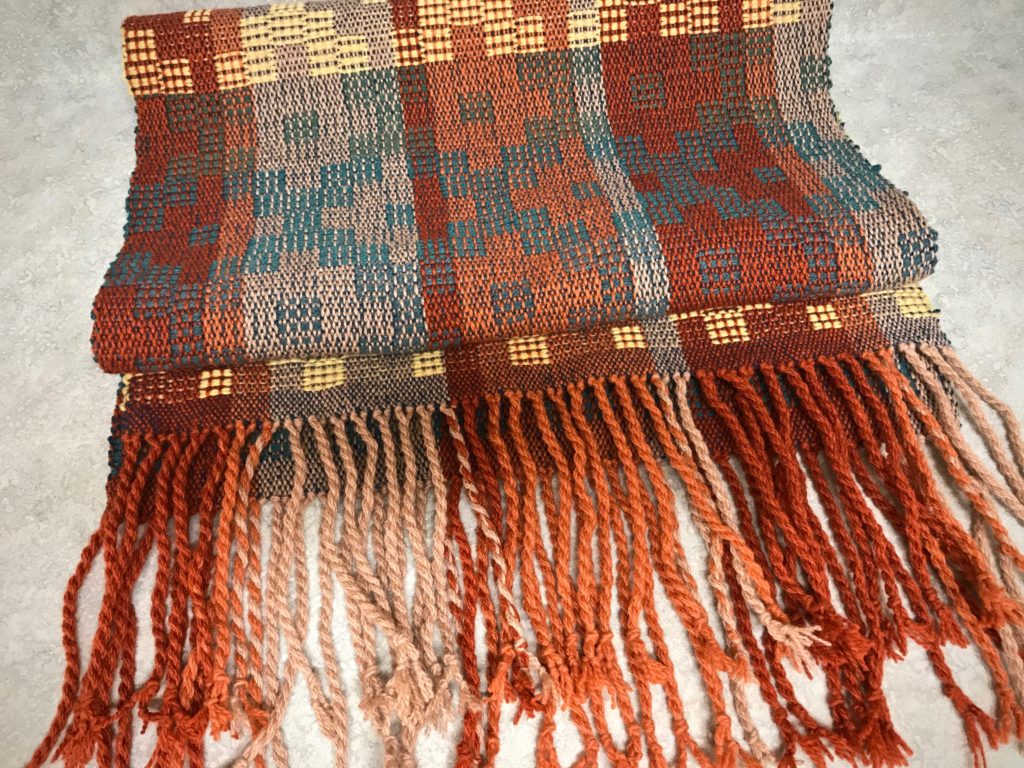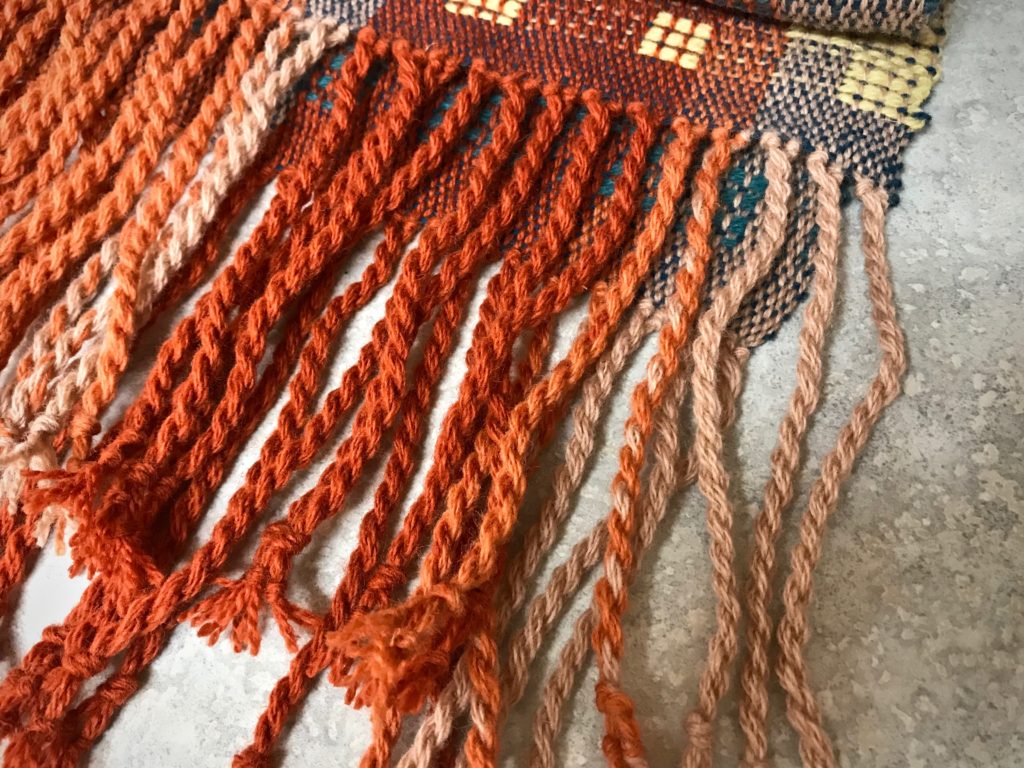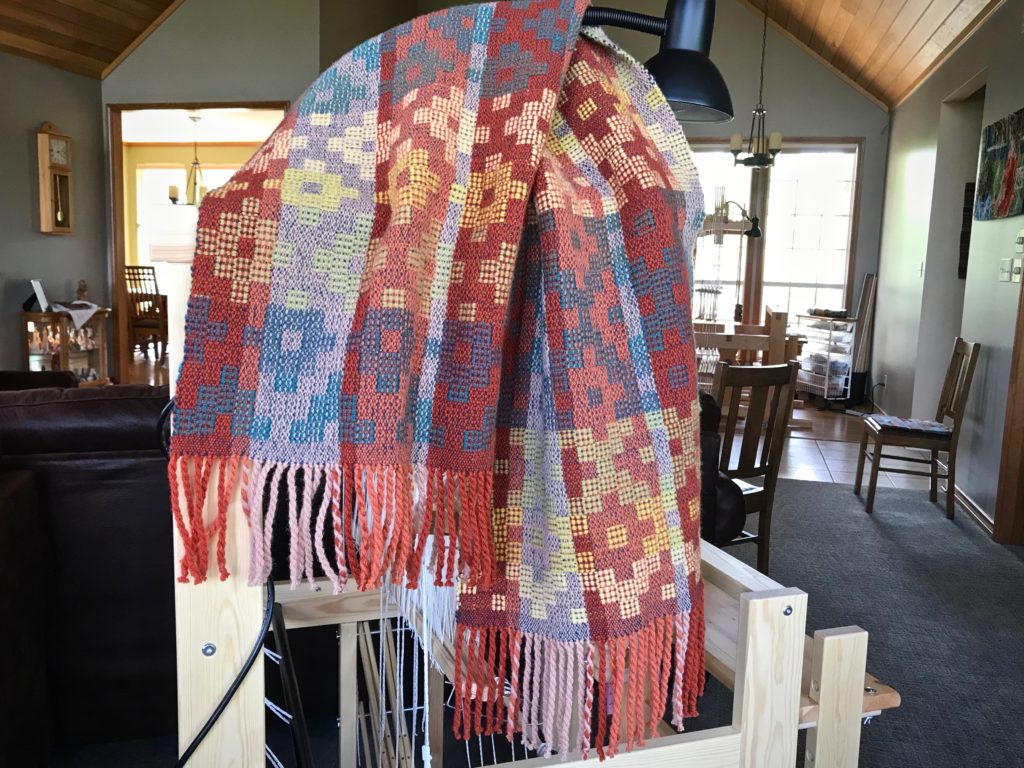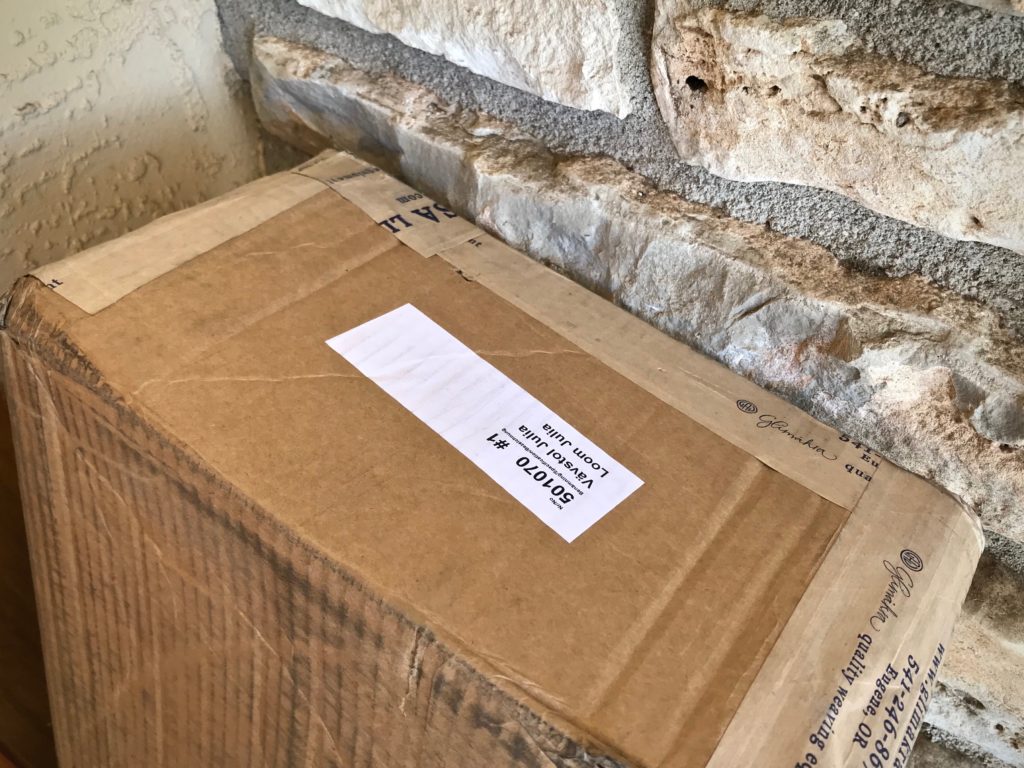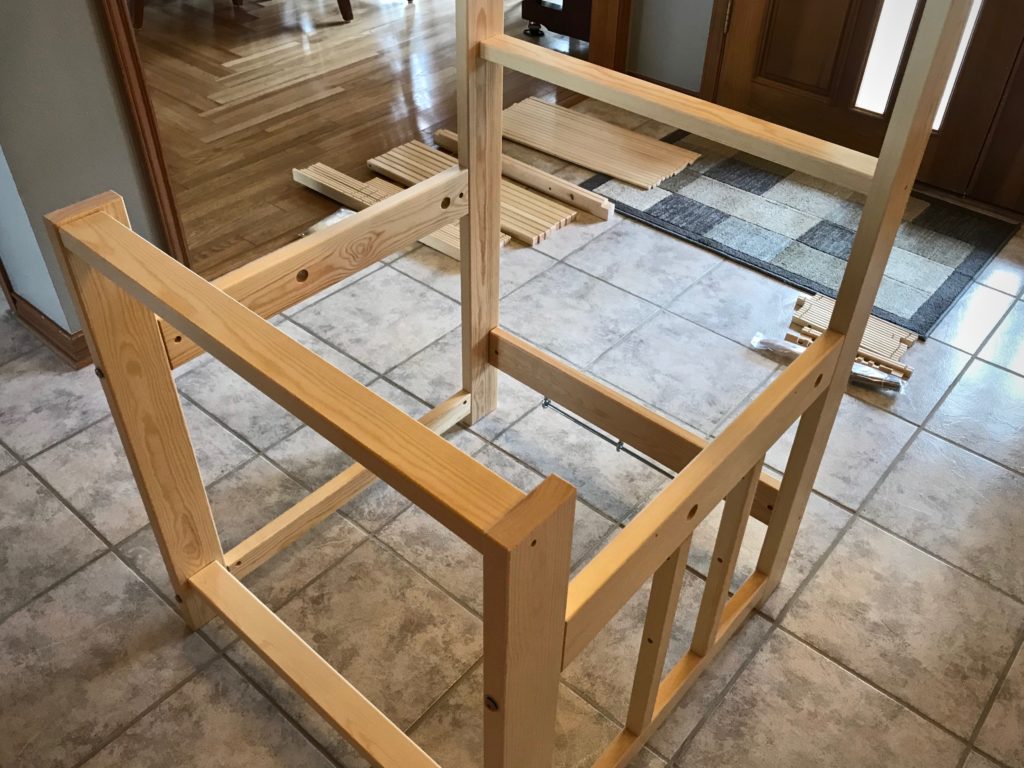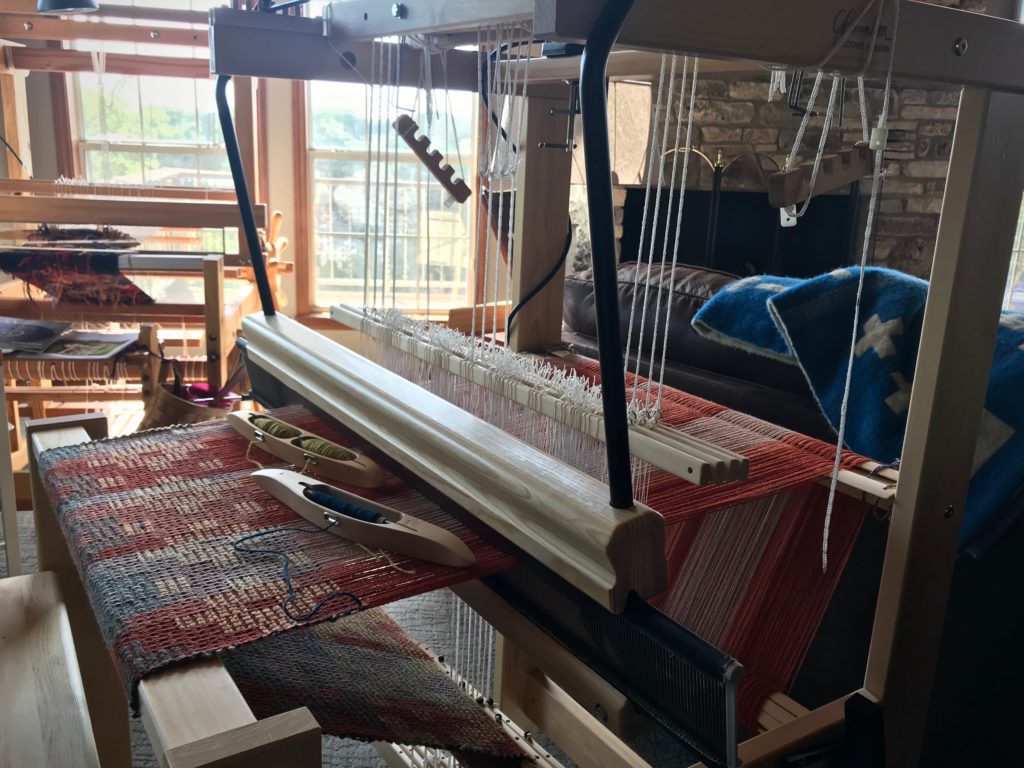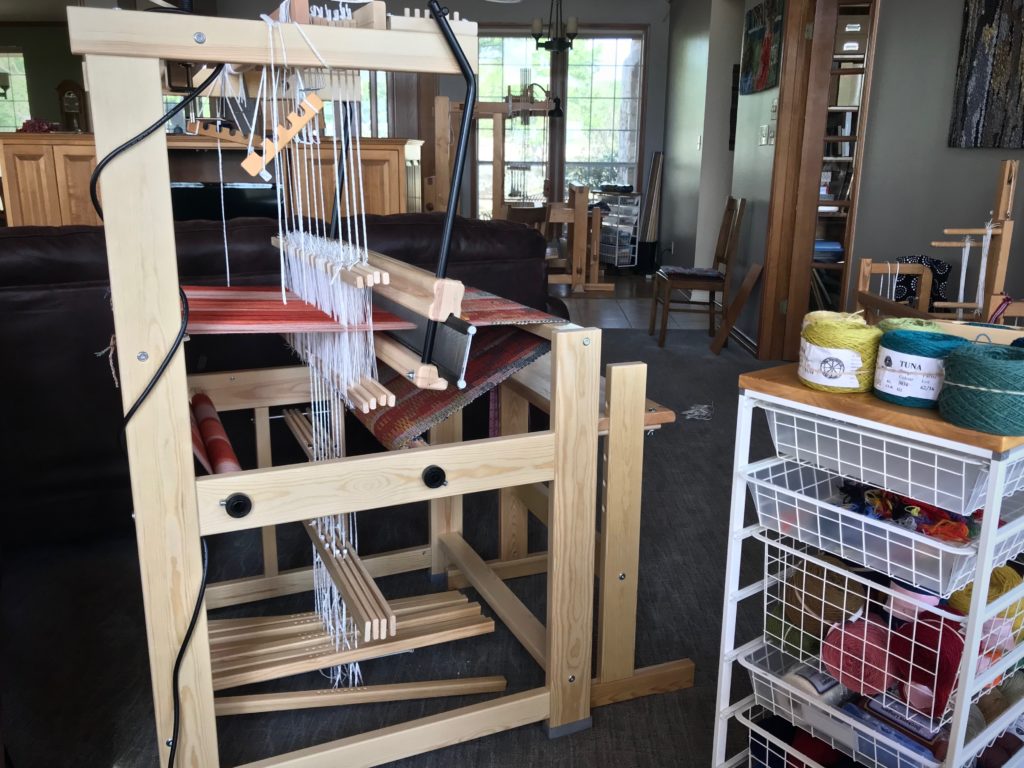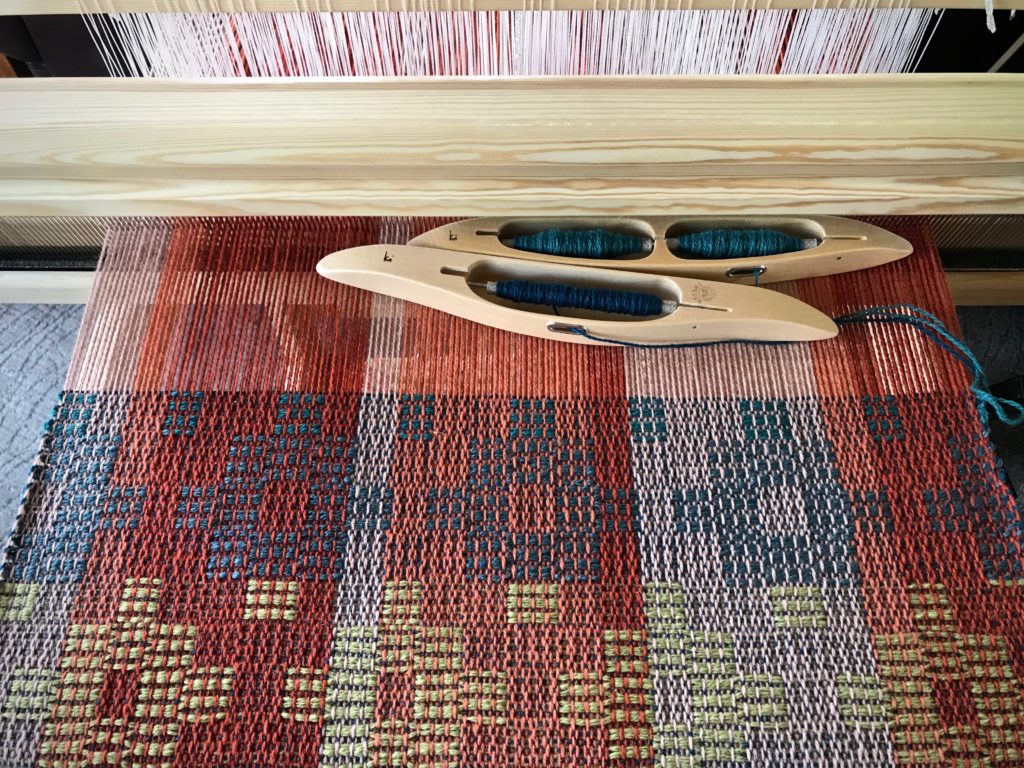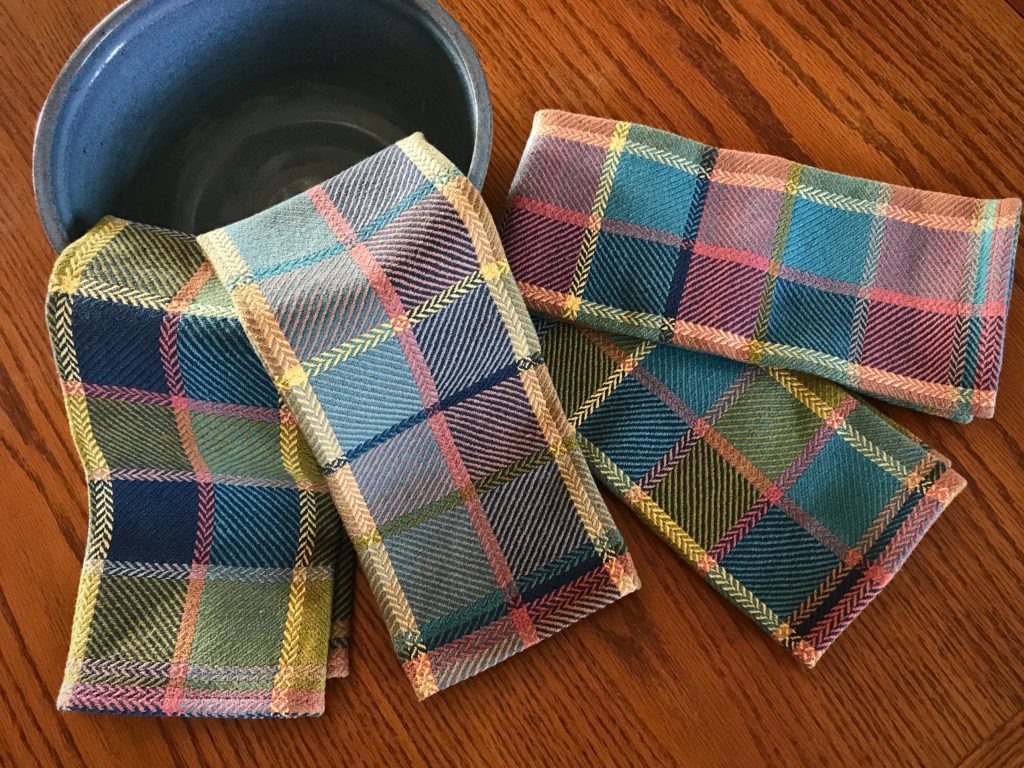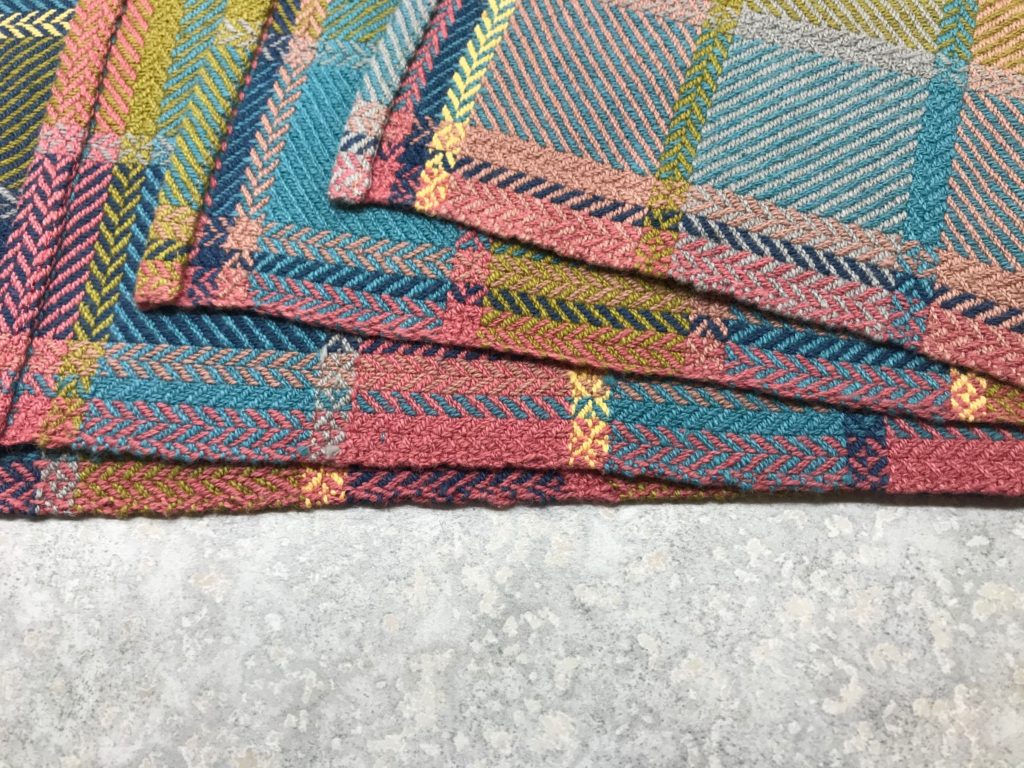I found a way to practically eliminate draw cord errors on the single-unit drawloom. After making one too many mistakes while weaving this rag rug, I resolved to find a solution. True, I will still make mistakes, but now I expect them to be few and far between. (To view the first rag rug on this warp, see Stony Creek Drawloom Rag Rug.)
My most frequent error is having a draw cord out of place, either pulled where it shouldn’t be, or not pulled where it should be. And then, I fail to see the mistake in the cloth until I have woven several rows beyond it. I determined to find a way to eliminate this kind of error. (For an example of this kind of error, see Handweaving Dilemma.)
Test 1. Double check my work. Pull all the needed draw cords for one row and then double check all the pulled cords.
Results: This bogs me down. And I still fail to catch errors.
Test 2. Double check my work little by little. Treat every twenty draw cords as a section—ten white cords and ten black cords. Pull the cords in the first section. Double check. Pull the cords in the next section. Double check. And so on all the way across…
Results: Easy to do. I quickly catch and correct errors.
Now, I am implementing this incremental method of double checking my work on the little bit of warp that remains. With a Happily-Ever-After ending, the short Lost Valley piece is completed with NO draw cord errors! (Lost Valley is the name we’ve given our Texas Hill Country home.)
Woven Rag Rug and Lost Valley process in pictures:



















May you learn from experience.
Happy Weaving,
Karen

